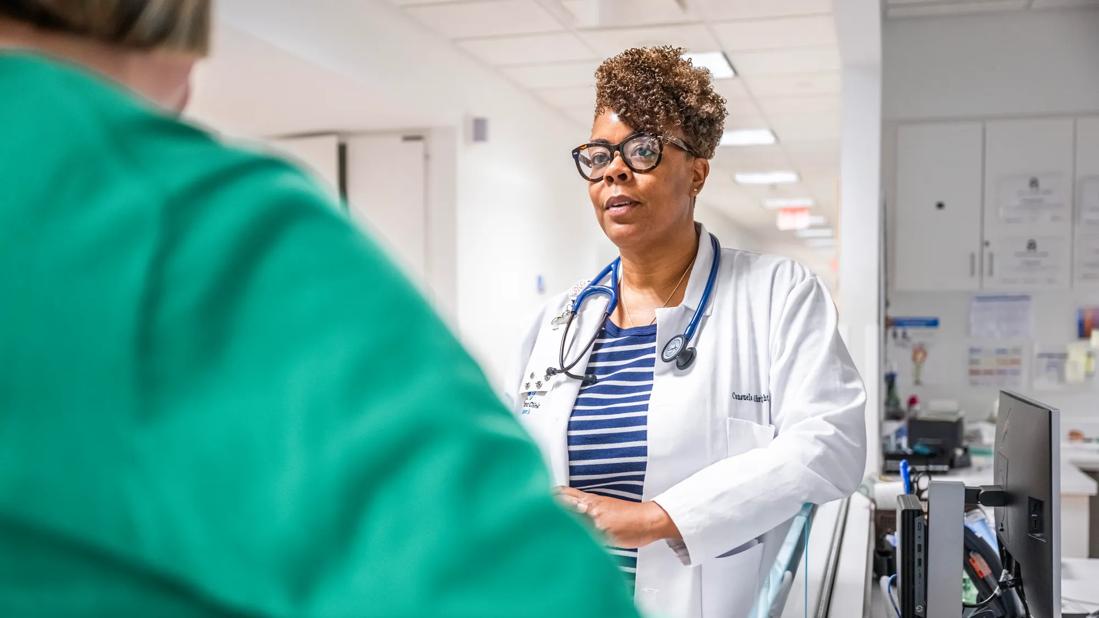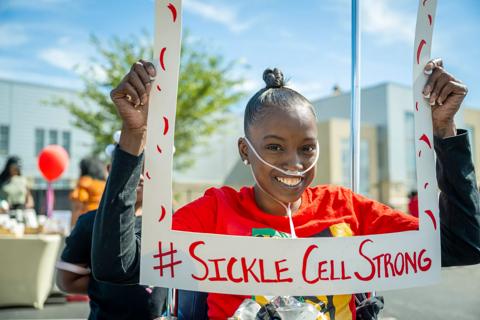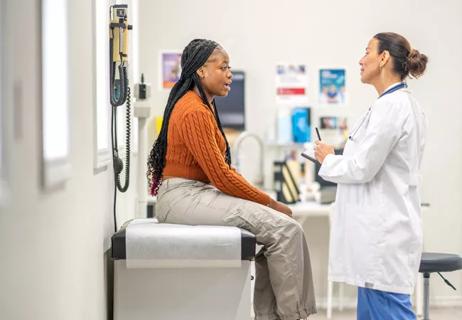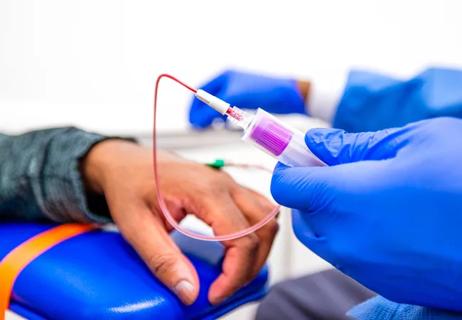New course offers insights into clinical, psychosocial and ethical dimensions of care

Sickle cell disease (SCD) affects about 100,000 people in the United States, making it among the most common genetic disorders. The majority of individuals living with the condition are of African ancestry or are Black, with estimates above 90%.
Advertisement
Cleveland Clinic is a non-profit academic medical center. Advertising on our site helps support our mission. We do not endorse non-Cleveland Clinic products or services. Policy
Misconceptions about SCD persist, even within the healthcare community. Recognizing this, Denise Lahoski, MSN, clinical program manager, collaborated with members of hospital leadership and the sickle cell team, including care coordination and social work and bioethics, to create a clinician-focused course.
The sessions cover everything from disease fundamentals and pathophysiology to clinical, psychosocial and ethical considerations involved in caring for this patient population. "We have a dedicated sickle cell team, but the rest of our staff, who also provide services, get little to no specific education on caring for patients with sickle cell disease," notes Lahoski.
The crescent-shaped red blood cells are a pathophysiological hallmark of SCD. This blood cell abnormality causes a myriad of manifestations, including vaso-occlusive pain crisis and chronic anemia. Unmanaged disease can lead to multiorgan failure and early death. Because SCD can affect every organ system in the body, it requires comprehensive, multidisciplinary care.
"There is so much ground to cover. With sickle cell disease, anywhere blood is flowing can be affected," says Consuela Albright, CNP, who instructs a portion of the course. "The feedback we've gotten is that it's eye-opening to clinicians who come to learn that these sickled red blood cells are causing pain and so much more. These cells are creating damage in the body, and there can be serious implications because of that."
Albright discusses the unique features of the disease, including when people are diagnosed (at birth), what lab work can reveal (hemolysis, but not pain), what causes a pain crisis (a variety of triggers), lesser-known clinical features (such as bone and organ damage), and much more.
Advertisement
Pain management is often another area of education for providers. Vaso-occlusive pain crises are common in patients with SCD, and such events can be severe and long-lasting, making pain management an important area for provider education.
Gene editing therapies are still experimental, but the results have been promising, raising hopes for a potentially curative option in select patients. Cleveland Clinic is a site leader for the multicenter Ruby trial that is evaluating the safety and efficacy of exagamglogene autotemcel (reni-cel; formerly known as EDIT-301).
Participants will also learn about Cleveland Clinic's Sickle Cell Medical Neighborhood, an initiative first launched in 2022 to help transition pediatric patients with SCD to adult-centered care. The program's RN coordinators lead this session, acknowledging that as patients with SCD age, their needs change.
The medical neighborhood aims to support and guide patients through what can be a period of heightened vulnerability, where discontinuation of follow-up care is common. Today, this clinic supports nearly 250 patients, ranging from newborns to individuals aged 80 years and older, across five different Cleveland Clinic sites.
Living with SCD, a disease associated with chronic pain and stigma, can create challenges that impede patients' mental health and overall wellness.
Social workers address psychosocial barriers like fear and anxiety may play a role in delayed or deferred care. Many patients opt for staying at home during a pain crisis rather than going to the emergency room. They also address social drivers of health that may impact patients' access to care. Understanding these psychosocial barriers is critical, particularly in emergent and inpatient settings, where some providers may have limited encounters or knowledge about people living with SCD.
Advertisement
Finally, bioethicists and an SCD patient panel deliver the final sessions of the day, designed to invoke reflection on clinicians' own understanding of the disease, how it this can knowingly or unknowingly contribute to adverse patient outcomes.
The goal is to build awareness and empathy, notes Lahoski. Understanding patients’ lived experiences, including the physical and emotional burdens of managing a chronic condition, is the path toward to the best possible SCD care.
The session was initially created for physicians, advanced practice providers, nurses, medical and inpatient patient care assistants, social workers, therapists and child life specialists within the Cleveland Clinic Children's Department of Pediatric Hematology/Oncology & Blood and Marrow Transplant. But Lahoski and Albright opened the session to a broader audience following positive feedback from internal attendees and interest from outside institutions.
Cleveland Clinic has become a destination for SCD care, underscoring the importance of provider education. Says Lahoski, "We are encountering more and more patients each month from around the world."
With emerging therapies and well-coordinated care ushering in hope for patients and their families, it's more important than ever for providers to understand the challenges this patient population faces.
Albright says she hopes the course sparks a desire to be more aware of these patients' unique needs, adding, "If you're educated, you're empowered to do better. I hope that clinicians will come away from this having some baseline knowledge and apply it in those real-world situations."
Advertisement
Advertisement
Advertisement

Integrated care model reduces length of stay, improves outpatient pain management

Watch for sudden unilateral vision loss without pain

Efficacy, safety and tolerability data shared at hematology meeting

Nurses play key role in comprehensive lifetime treatment program

How to combat the rise in mortality when patients become adults

Two-year event-free survival comparable to matched sibling donor myeloablative transplant

First-in-human trials of CRISPR-Cas12a gene editing demonstrate safety and meaningful event-free survival

First in-human trial using CRISPR/CASP 12 for gene editing in sickle cell disease